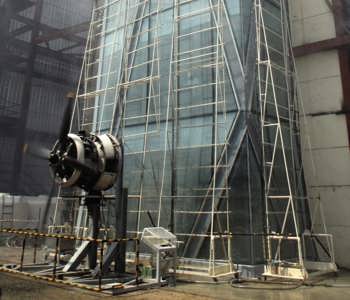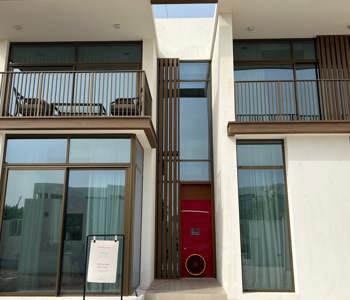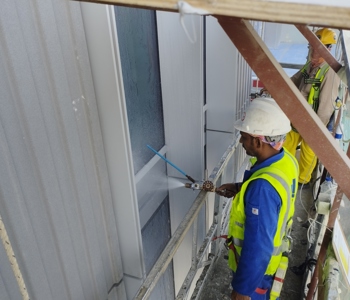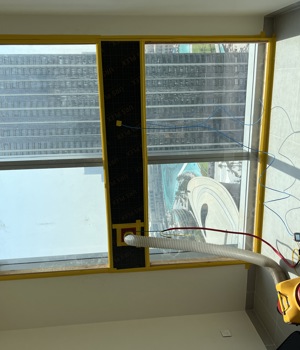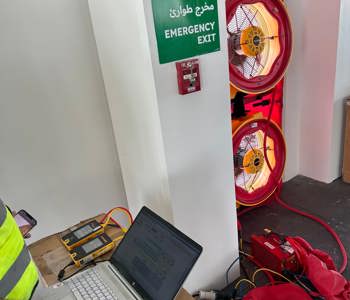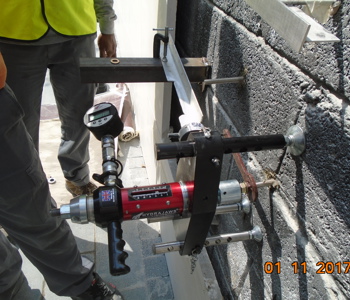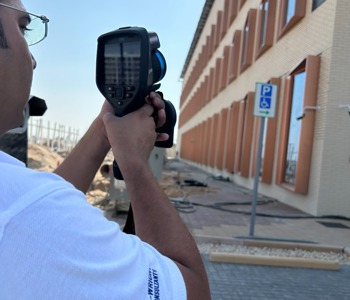Curtain walls have to keep the weather out, and the people in. At TBW, we provide full-scale curtain wall testing to make sure that these systems are designed to meet the performance requirements of the project.
What is Curtain Wall Testing
Curtain walls and other façade elements require performance testing to evaluate if their design principle has been met and is structurally safe and if their assembly and installation can guarantee a good protective shield for the complete building.
Testing must be done to identify and rectify improper design, improper fabrication, and improper installation. Tests are a must-do and should be carried out in every project. This helps the Project Manager to act proactively, thus the company can save valuable material in the form of modification, valuable time, and money. The performance of the material as per design requirement will be assured and peace of mind, on the functionality of the system, is achieved.
We can provide laboratory and on-site testing for Curtain walls and other façade elements such as doors & windows, glass walls, skylights, metal or glass roofing, metal cladding, granite walls, etc.

Curtain Wall Laboratory Testing
Laboratory Testing verifies that the design of the proposed system is capable, when assembled under ideal conditions in the laboratory, of meeting the design criteria (for example, air and water tightness and wind load). It also shows the contractor’s team where the critical details are and the importance of the workmanship.
Curtain wall testing should be done as early as possible in the construction process, preferably during the design phase and before installation. This will help to identify any potential problems and allow for the Project Manager to act proactively, thus saving valuable time, and money.
This way, façade or curtain wall testing gives the project team the confidence to proceed with this major construction item, as it saves potential expenditure on rectification and delivers value to all stakeholders.
Our laboratory can accommodate 12 or more mock-ups at a time in addition to the ability to accommodate large mock-ups (widths of 15m and heights up to 22m have been tested) and very high pressures.
Curtain Wall Testing Process
Performance testing of the specimen, both prior to construction and during construction, is a well-established and respected element of quality assurance. Testing representative segments of curtain walls, or windows, for example, comprises three basic tests plus other tests that are specified based on the project requirements.

The basic tests are Air Infiltration, Water Penetration, and Structural Load. For these curtain wall tests, an air-tight chamber is constructed on one side of the specimen and the following tests are carried out:
Air Infiltration test
Measuring the total flow of air and deducting from it the flow of air attributable to the chamber itself.
Water Penetration test
Creating a pressure differential across the specimen (with the lower pressure on the inside of the specimen) and spraying water uniformly on the exterior.
Structural Load test (serviceability and safety)
Pressurising the chamber (both positive and negative) to simulate wind-generated pressures. Generally, the water penetration test is repeated after the structural load test to ensure the performance and integrity of the system have not been affected.
Additional tests can also be conducted as per the project specification at the discretion of the Architect:
Dynamic Water Penetration test
Air from a large wind generator is directed at the specimen at the same time as the water spray
Vertical Building Movement and Seismic Test
One of the support beams is jacked in three cycles of lateral displacement.
The Thermal Cycling Test
This simulates cycles of annual changes in temperature. Placing an insulated chamber on the exterior side of the specimen. The temperature in the chamber is varied from ambient to a selected low temperature and then to a selected high temperature over a period of 8 hours, while the temperature on the inside of the specimen is maintained at room value.
The water penetration and/or air infiltration test are conducted again after Structural, Building Movement and Thermal Cycling Tests.
Curtain Wall Testing Standards
We are accredited to ISO 17025 and our results are therefore universally acceptable. We conduct testing as per ASTM, AAMA, CWCT, and BS EN standards. Refer to our accreditation schedules or contact us for more details.
Why Choose TBW for Curtain Wall Testing
We are accredited by UKAS, EIAC and GAC to ISO 17025 and our results are therefore universally acceptable. Our team of engineers and technicians have conducted hundreds of tests.
Mock-up testing is an important milestone to be crossed in each project to demonstrate compliance to project specification an industry standards. Our laboratory offers excellent turnaround time from inquiry stage to testing stage to final reporting.

